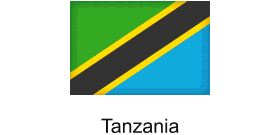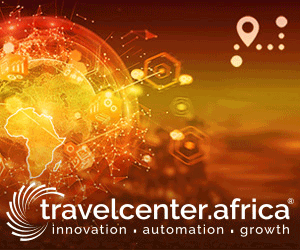 Uganda and Tanzania Aim for Unified East African Tourism Brand to Boost Regional Arrivals
Uganda and Tanzania Aim for Unified East African Tourism Brand to Boost Regional Arrivals
Calls for deeper tourism collaboration between Uganda and Tanzania are gaining fresh momentum, with regional leaders spotlighting the sector’s critical role in economic growth and integration under the East African Community (EAC). During Uganda’s 63rd Independence Anniversary in Arusha, Ambassador Anne Katusiime Kageye, Uganda’s Consul General, urged both nations to harness their exceptional natural and cultural assets through joint promotion and harmonised strategies.
Addressing a distinguished gathering at the Uganda Consulate Gardens, Katusiime outlined how closer cooperation could not only elevate the global standing of East Africa as a tourism powerhouse but also drive inclusive growth and job creation across borders. “Uganda and Tanzania, both blessed with incredible natural beauty, have the potential to complement each other in promoting tourism across the region,” she affirmed. “While Tanzania is renowned for its iconic wildlife and breathtaking landscapes, Uganda equally offers unique and diverse experiences that make it a true gem in the heart of Africa.”
The Consul General’s remarks come as both countries reflect on strong tourism performance in 2024. Tanzania attracted over 1.8 million international visitors, generating approximately USD 3.4 billion in revenue and contributing more than 17% to the national GDP. The sector also underpins 1.5 million jobs, marking a robust 30% rebound from pre-pandemic levels. Uganda, meanwhile, welcomed more than 1.1 million visitors, earning USD 1.2 billion and supporting over 600,000 jobs, with tourism accounting for 7% of GDP.
Katusiime believes these gains can be significantly amplified through unified policies, marketing, and cross-border product development. She emphasized, “By collaborating in marketing and harmonising policies, Uganda and Tanzania can increase tourism arrivals, create more jobs for our youth, and elevate the visibility of the East African Community as a unified tourism destination.”
Central to this vision is the idea of building a singular, compelling regional brand—embodied in the slogan ‘Visit East Africa, Feel the Vibe’—that leverages the strengths of each country. Tanzania’s legendary ecosystems and safari experiences are natural complements to Uganda’s portfolio of adventure and cultural offerings. Katusiime cited Uganda’s mountain gorillas in Bwindi Impenetrable Forest, adrenaline tourism along Lake Victoria and the River Nile, and the dramatic Murchison Falls as examples of the country’s diverse product range. “Our rich cultural heritage, vibrant traditions, festivals, and the warm hospitality of our people make Uganda a destination of authenticity and discovery,” she added.
The call for joint action is not just aspirational—it is rooted in the region’s economic realities. Tourism’s role as a catalyst for foreign exchange, youth employment, and cultural exchange is more vital than ever. With Africa’s middle class expanding and global interest in sustainable, experience-driven travel on the rise, there is a pressing need for targeted investments in regional infrastructure, harmonised visa policies, and innovative cross-border itineraries.
Regional integration was further highlighted by the presence of Joseph Ntakirutimana, Speaker of the East African Legislative Assembly (EALA), and other lawmakers at the Independence event. Their participation underscored growing political will to streamline collaboration and foster a more seamless tourism experience for international and intra-African visitors alike. Katusiime praised the gathering as “a testament to the growing spirit of regional integration within the EAC.”
Industry professionals across Africa are watching these developments closely, recognising that unified marketing and policy reform could yield substantial commercial benefits. For instance, harmonised entry requirements and multi-country visa schemes would simplify travel, encourage longer stays, and increase visitor spend across borders. Meanwhile, coordinated campaigns in key source markets—especially Europe, Asia, and North America—could boost brand recognition and draw new demographics.
The Consul General’s vision aligns with broader trends reshaping the continent’s tourism sector. As destinations compete globally, product differentiation and regional synergies will become increasingly important. Uganda and Tanzania’s complementary strengths—ranging from wildlife and adventure to culture and community-based tourism—position the EAC region to capture a greater share of the high-value, experience-seeking traveller.
Looking ahead, both governments are expected to pursue new bilateral agreements focused on:
- Joint marketing campaigns targeting emerging and established international markets
- Coordinated participation in global trade shows and digital platforms
- Development of cross-border circuits and thematic routes, such as wildlife, adventure, and heritage trails
- Streamlined visa and entry processes to facilitate seamless movement for visitors
- Capacity building and training for tourism professionals to ensure high service standards
Katusiime also reaffirmed Uganda’s commitment to democratic values and peaceful cooperation ahead of its 2026 general elections, extending goodwill to Tanzania as it prepares for national polls. “Uganda remains steadfast in upholding democracy, peace, and cooperation within our region,” she declared, framing political stability as an essential foundation for tourism growth.
The Uganda Consulate in Arusha—tasked with advancing diplomatic, economic, and cultural ties—continues to play a pivotal role in fostering collaboration under the EAC umbrella. As momentum builds, the industry’s next steps will focus on turning these cross-border visions into concrete products and policies that deliver measurable benefits for communities and businesses across East Africa.
For Africa’s tourism sector, especially in the sub-Sahara, the message is clear: strategic partnerships, harmonised branding, and policy innovation are the keys to unlocking the region’s vast tourism potential and carving out a distinctive, competitive position on the world stage.
